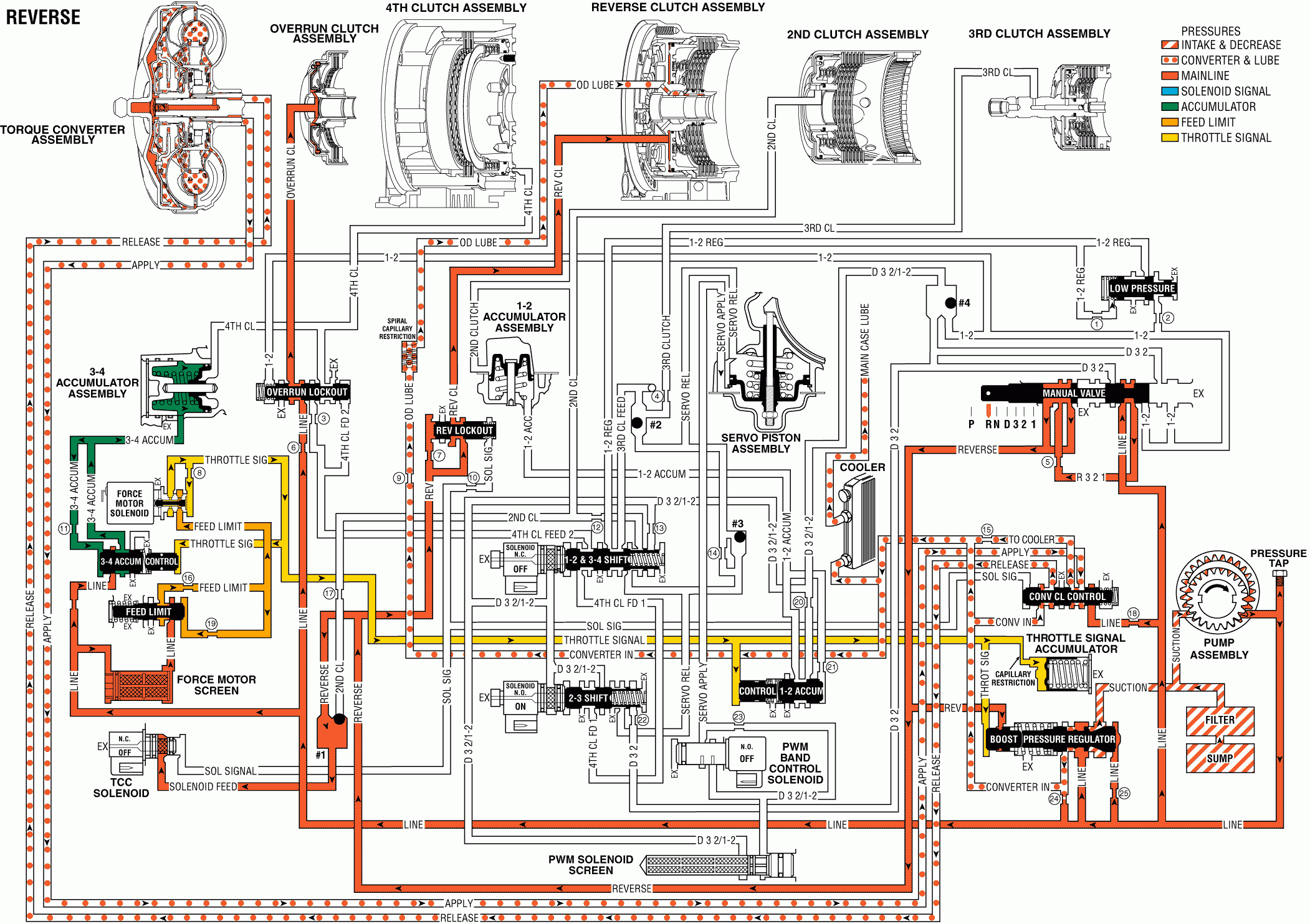For 1990-2009 cars only
When the gear selector lever is moved to the Reverse (R) position (from the Park position), the following changes occur in the transmissions hydraulic and electrical systems:
Manual Valve: Moves to the Reverse (R) position and line pressure enters the R321 fluid circuit. R321 fluid is orificed back through the valve and into the Reverse fluid circuit. This orifice (#13a) helps control the apply rate of the reverse clutch.Mode Switch: Located on the selector shaft (61), it signals the TCM that the selector lever and manual valve are in the Reverse position.
Reverse Clutch Applies
Reverse Lockout Valve: Reverse fluid pressure moves the valve against spring force and into the reverse position. In the this position the valve directs reverse fluid into the reverse clutch fluid circuit (under certain conditions the transmission may not shift into Reverse - see Reverse Locked Out below).Reverse Clutch Piston: Reverse clutch fluid pressure moves the piston to apply the reverse clutch plates.
Reverse Shuttle Valve: Located in the adapter case, it is seated against the 2nd clutch fluid circuit by reverse fluid pressure. Reverse fluid fills the solenoid feed fluid circuit.
Torque Converter Clutch Solenoid: Under normal operating conditions in Reverse the normally closed TCC solenoid is OFF. This blocks solenoid feed fluid from entering the solenoid signal fluid circuit, thereby preventing TCC apply.
Boost Valve: As in Park range, throttle signal fluid pressure acts on the boost valve and moves it against the pressure regulator valve. This increases line pressure in relation to vehicle operating conditions. In Reverse, reverse fluid pressure also acts on the boost valve. Reverse fluid pressure increases the operating range of line pressure for the additional torque requirements in Reverse.
Shift Solenoids: The 1-2/3-4 shift solenoid remains OFF and the 2-3 shift solenoid remains ON. Also, the manual valve continues to block fluid from feeding the solenoids and the solenoids remain ineffective.
Reverse Locked Out
TCC Solenoid: Energized by the TCM, the solenoid opens and solenoid feed fluid fills the solenoid signal fluid circuit.Reverse Lockout Valve: Solenoid signal fluid pressure assists spring force and moves the valve against orificed reverse fluid pressure. This blocks reverse fluid from entering the reverse clutch fluid circuit and keeps the reverse clutch fluid circuit open to an exhaust port. Therefore, the reverse clutch is prevented from applying.
TCC Control Valve: Solenoid signal fluid pressure moves the valve against spring force and into the apply position. This opens release fluid to an exhaust port and line pressure fills the apply fluid circuit. Therefore, the converter clutch is applied during Reverse Lockout.
Reverse

